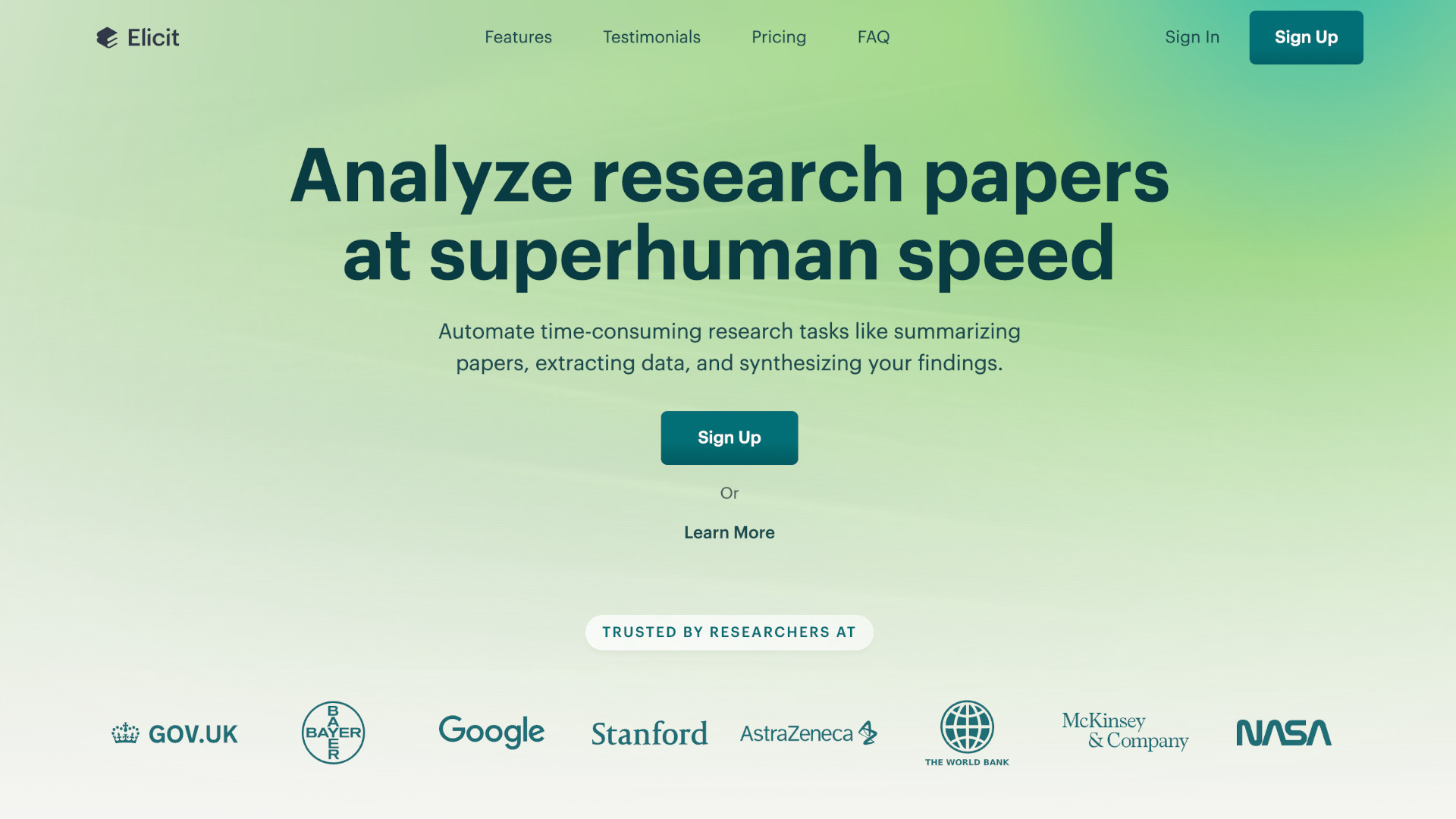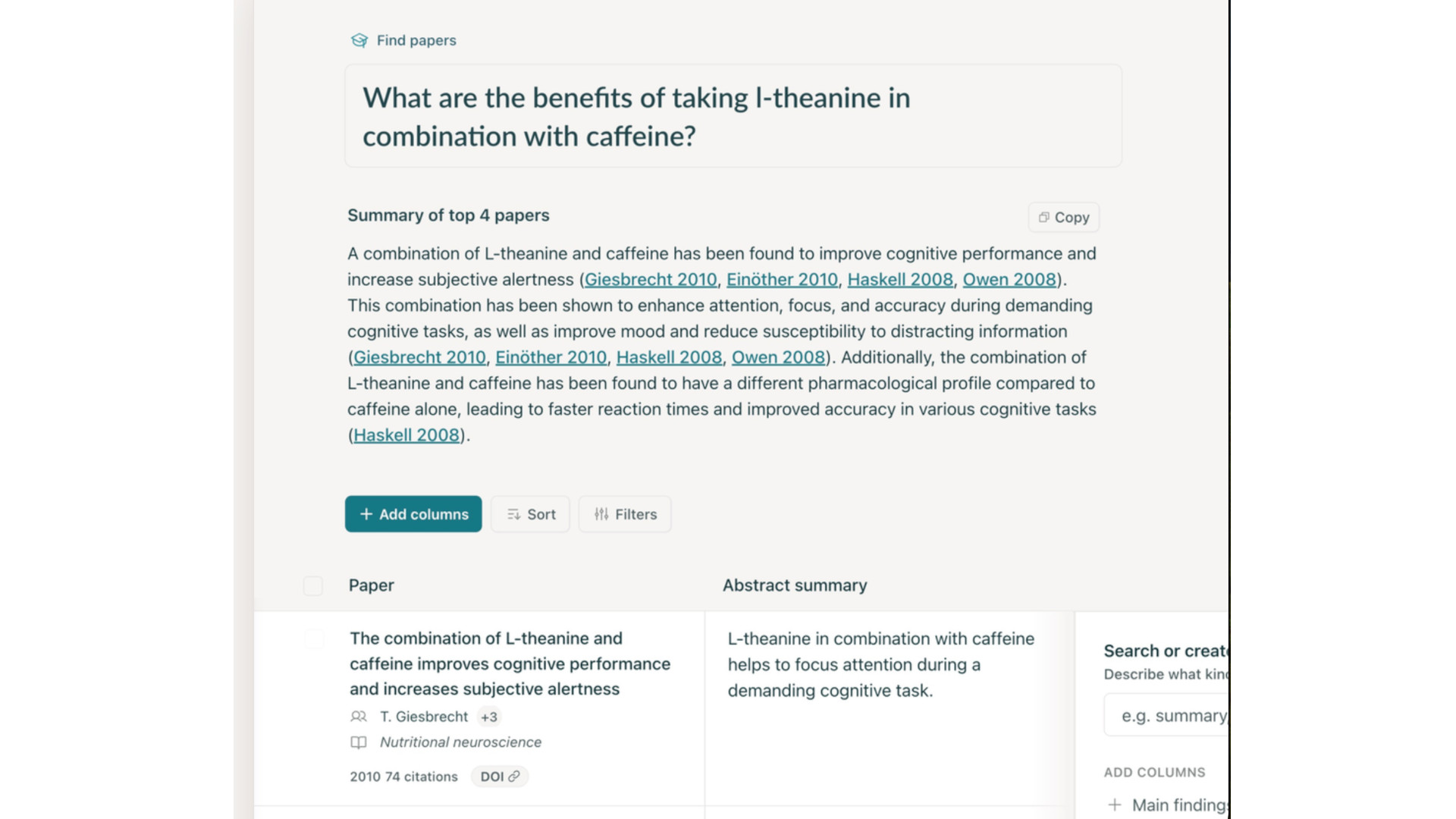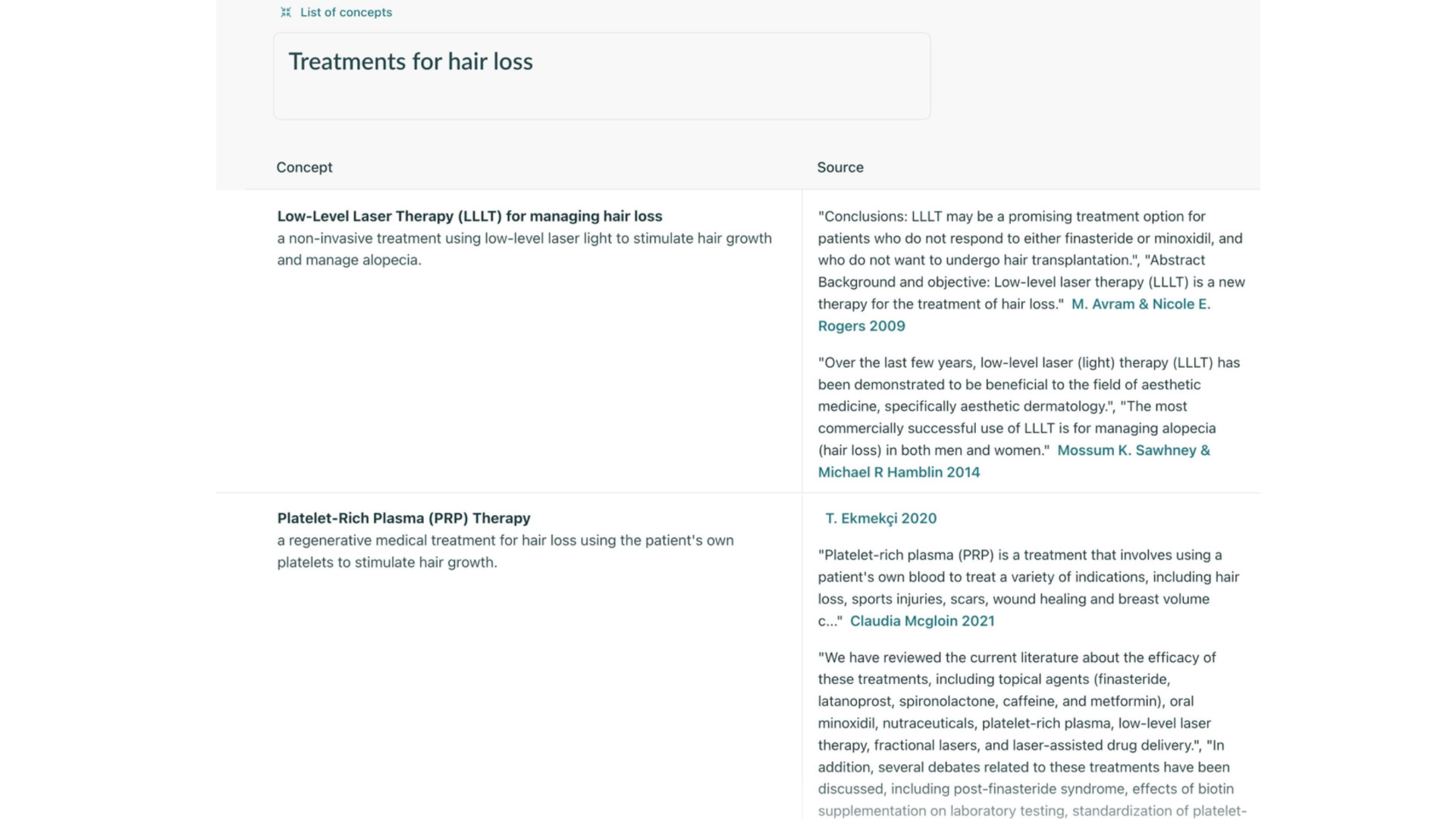
Elicit aims to make research quicker and easier by using artificial intelligence to speed up the process. The idea is to give educators all the information only in a far quicker way.
AI tools are cropping up all over with lots focused on education. This particular one is specifically tailored to research with a view to offering summaries and citing data extraction in an automated way.
So while this is a useful tool for teachers, it could also be used by more advanced students who wish to learn about a subject directly from primary sources of information.
This guide aims to lay out all you need to know about Elicit so you can decide if it could help in your class.
What is Elicit?
Elicit is an AI powered tool that takes multiple research papers and offers summaries and data extraction to give you a quick overview of the information contained within, including sources -- ultimately, saving you time.

Elicit effectively acts as a frontline for research, allowing the user to explore unfamiliar literature. It's then possible to dive in deeper if needed, only this way lets you explore a wider area before drilling down thanks to that AI help.
Usefully, this works with conversational-style interactivity, so it is very easy to use and lets you ask for what you want in a natural way. As such, even the less tech-savvy should be able to get the most out of this tool right away.
This is a bit like a super smart search engine -- think Google Scholar -- only combined with the smarts of ChatGPT. All that helps you find information from primary research paper sources as if searching the internet.
How does Elicit work?
Elicit uses a simple search bar that allows you to ask a question naturally, which will get an answer that pulls in research from many relevant papers. Crucially, it is shared in a concise way that gives you an immediate feel for where you may want to explore next.

Elicit lets you search and then gives you a summary of results, citing sources. That can mean you may have a few sentences to answer a question, yet that information has come from several research papers. You can then click into each to dive deeper and get more information on any area that's specifically useful to you.
Each paper is also listed below with a summary for that particular research result laid out next to it, giving you another layer of data before you need to go deeper.
The option to search using concepts is available, which allows you to find themes that run across papers. You might be asking about research on time or space and will find this search technique reveals trends that are coming across research right now -- ideal as a theme to explore in class.
What are the best Elicit features?
Elicit is super simple to use and helpfully gives everything top level with layers beneath that. You can scan and search quickly without having to dip into a paper only to find it's not relevant, as you may have had to traditionally.

Elicit offers access to more than 200 million academic papers, at time of publishing, all of which can be searched using natural language. Usefully, this system will likely help you discover papers you might previously not have found -- making for unique teaching that expands student knowledge through and beyond the curriculum.
Elicit is best when it comes to number-based science, so for empirical research on biomedicine and machine learning, for example, the results are powerful. As you get more into the social sciences this may not be as effective, it's worth noting.
It is also possible to upload papers to Elicit that will be held privately, allowing you to use any in research output only. A lot of this is available for free with a credit system to go further, but more on that next.
How much does Elicit cost?
Elicit is free to use for most of its basic functionality. It also offers some subscription options to get you more and a credit system in which you can do more as you spend these -- adding columns to tables or running workflows are charged using these.
Free gets you the ability to search papers, extract data, find concepts, upload your own papers, and save results to view later. This include 5,000 credits.
Go for the Plus tier at $120/year and you get 12,000 credits, the ability to buy more credits as needed, export to RIS, CSV, and BIB, high-accuracy mode, use of information from tables in papers, and priority customer support.
The Institution model is available at custom pricing that lets you share credits across your organization, invoice-based billing, and top priority customer support. Plus, you can buy as many credits as you need.
Elicit best tips and tricks
Research as a class
Show students how to use this tool as a research aid by using it on the big screen in class, being sure to focus on checking sources.
Find fun
Have students share an area of research they find interesting then use the tool in the week to plan for the next lesson, with fresh papers to draw in current developments.
Set tasks
Create an initial question and have students answer it, in summary as well as with depth and references, to work with this tool helpfully.







